Spray deck
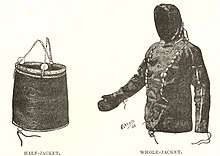
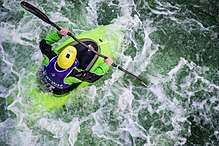
A spraydeck (sprayskirt in N. America, akuilisaq or tuiitsoq in Greenland) is a flexible waterproof cover for a boat (in particular for a kayak or a canoe) with holes for the passengers' waists. Spraydecks are used to prevent water from entering the boat while allowing passengers to paddle or row.
Spraydecks are used in breaking waves, on whitewater, in inclement weather, and in splashy sports. An alternative is the tuilik.
Construction
A spraydeck is made of water-tight cloth. It is sized to fit over the opening, or cockpit, of the canoe or kayak, with holes for the waists of the passengers. The spraydeck generally seals around the rim of the cockpit and around the torso of each passenger.
Each opening in a spraydeck must make a fairly watertight seal. The seal varies in quality. The deck can be made to seal in several ways, including elastic fabric, a hem containing an elastic cord and/or drawstring, and both.
Boat types
Kayak spraydeck
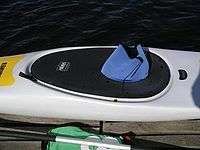
Spraydecks are worn by kayakers in most conditions, but especially on rough water and in inclement weather, to prevent water entering the kayak's cockpit and to help the kayaker roll.
On a kayak, the spraydeck is secured to a rim surrounding the cockpit with a line or elastic string called a rand.[1] The line or string often runs inside the hem along the edge of the spraydeck. Alternatively elastic cord is attached directly to the edge of the spraydeck, and is tightened around the rim of the kayak's cockpit or stretched over it.
The fastening may be pulled tight or held so by its elasticity, this prevents water infiltration while allowing passengers to quickly release it if the boat should capsize. To aid easy release during a capsize, a grab loop is attached at the front of the spraydeck, which the kayaker can use to pull the spraydeck free. A properly sealed spraydeck will allow a kayaker to perform an eskimo roll and continue paddling without having to bail out.
A kayaker's spraydeck is also known as a "sprayskirt", because it is donned like a skirt before entering the boat. "Sprayskirt" is the more common term in the US.
Spraydecks for traditional kayaks are narrower, to fit narrow custom-fitted cockpits; mass-produced kayaks have larger cockpits and the spraydeck must therefore be wider at the hem.
Canoe spraydeck
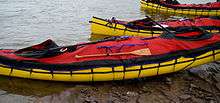
On a canoe, the spraydeck is secured to the outside of the hull with string or cords to a webbing specifically installed for this purpose. Modern designs have many features for safety and convenience such as map and paddle pockets, access openings, and tie-down straps.
Like a kayak, a spraydeck will allow a canoer to perform a kayak roll (provided he/she is strapped to the canoe) and continue paddling without having to bail out. But this manoeuvre is more difficult.
On a canoe, it is not only a safety item but may also be used for comfort. During rainy or cold weather, it keeps the lower body of the canoers dry and warm, and prevents rain from building up a puddle at the bottom of the boat.
Materials
Sealskin is a traditional material for spraydecks. Modern materials include neoprene, waterproofed nylon, or a combination of both materials. The most appropriate material depends on the temperature/time of year and on the type of water being paddled. Whitewater spraydecks are made totally from neoprene, whereas flatwater touring/sea kayak spraydecks may be made from either material.
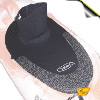
Neoprene
These spraydecks are snug, tight, thick to keep in the warmth, and very tight fitting on the cockpit. They can usually withstand rolling, bracing and high wind and waves. They sometimes get uncomfortably warm during hot weather, but will keep the paddler very warm during colder conditions. On modern neoprene spraydecks, the rand is usually elastic cord attached directly to the rim of the spraydeck.
Nylon
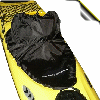
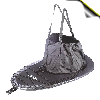
Nylon spraydecks are easy to attach, easy to remove, offer adequate seal to keep water out, comfortable, sometimes breathable, sometimes waterproof and are used during warmer conditions. They will either have neoprene or nylon for the torso. Nylon spraydecks are less commonly used during rough conditions as they are not as tighly fitted so are more likely to accidentally become free.
Other materials
Whitewater spraydecks often have additional features to ensure the best seal and greatest robustness. Latex may be coated on the underside of the deck to grip the cockpit better and/or a protective material (e.g. Kevlar) added to the surface of the deck to provide abrasion resistance.